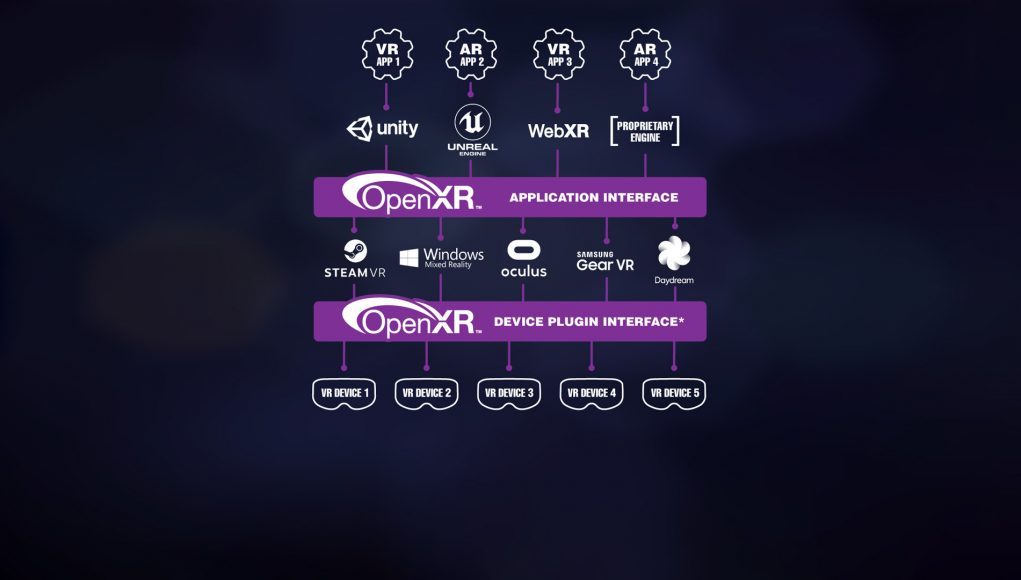Khronos Group, the consortium behind the OpenXR industry standard, today announced that it has begun officially certifying products that correctly implement the OpenXR standard. Additionally, the group has added new extensions to the standard to support hand-tracking and eye-tracking.
OpenXR is a royalty-free standard that aims to standardize the development of VR and AR applications, making for a more interoperable ecosystem. The standard has been in development since April 2017 and is supported by virtually every major hardware, platform, and engine company in the VR industry, including key AR players.
The Khronos Group has announced the OpenXR Adopters Program, allowing any company building an OpenXR product to apply for the official stamp of approval. Once approved, products can use the OpenXR logo on their implementation and also gain patent protection under the Khronos IP Framework.
To ensure that companies are correctly implementing the standard, Khronos Group has published the OpenXR Conformance Test Suite, a collection of tests which companies can use to verify that their OpenXR product is correctly implementing the standard.
The announcements mean that OpenXR is finally ready to be rolled out widely across the XR industry.
“The time to embrace OpenXR is now,” said Don Box, Technical Fellow at Microsoft. “In the year since the industry came together to publish the OpenXR 1.0 spec and demonstrated working bits at SIGGRAPH 2019, so much progress has happened. Seeing the core platforms in our industry getting behind the standard and shipping real, conformant implementations […] is singularly awesome.”
Khronos says that Facebook has shipped an OpenXR implementation for both Quest and Rift, and Microsoft has shipped an implementation for WMR headsets and HoloLens 2. Valve has also published a preview implementation of OpenXR which developers can begin building with.
“OpenXR is designed to enable VR content compatibility on as many devices as possible, giving developers the confidence of knowing they can focus on one build of their VR title and it will ‘just work’ across the entire PC VR ecosystem,” said Joe Ludwig of Valve. “This release is a huge step forward toward that goal, bringing support from two different implementations in the PC ecosystem. With these and more on the way, including our ongoing developer preview in SteamVR, now is the time for developers and engine vendors to start looking at OpenXR as the foundation for their upcoming content.”
Khronos also announced new extensions to OpenXR which expand the standard to support hand-tracking and eye-tracking.
Hand-tracking company Ultraleap has published an OpenXR preview implementation for its Leap Motion hand-tracking peripheral, and high-end enterprise headset maker Varjo has published an OpenXR preview implementation for its eye-tracking headsets.
The end goal of OpenXR is to standardize the way that VR apps and headsets talk to each other. Doing so simplifies development by allowing tool and app developers to develop against a single specification instead of different specifications from various headset vendors. In many cases, OpenXR compatibility means that the exact same app can be run across several compatible headsets with no modification or even repackaging.







